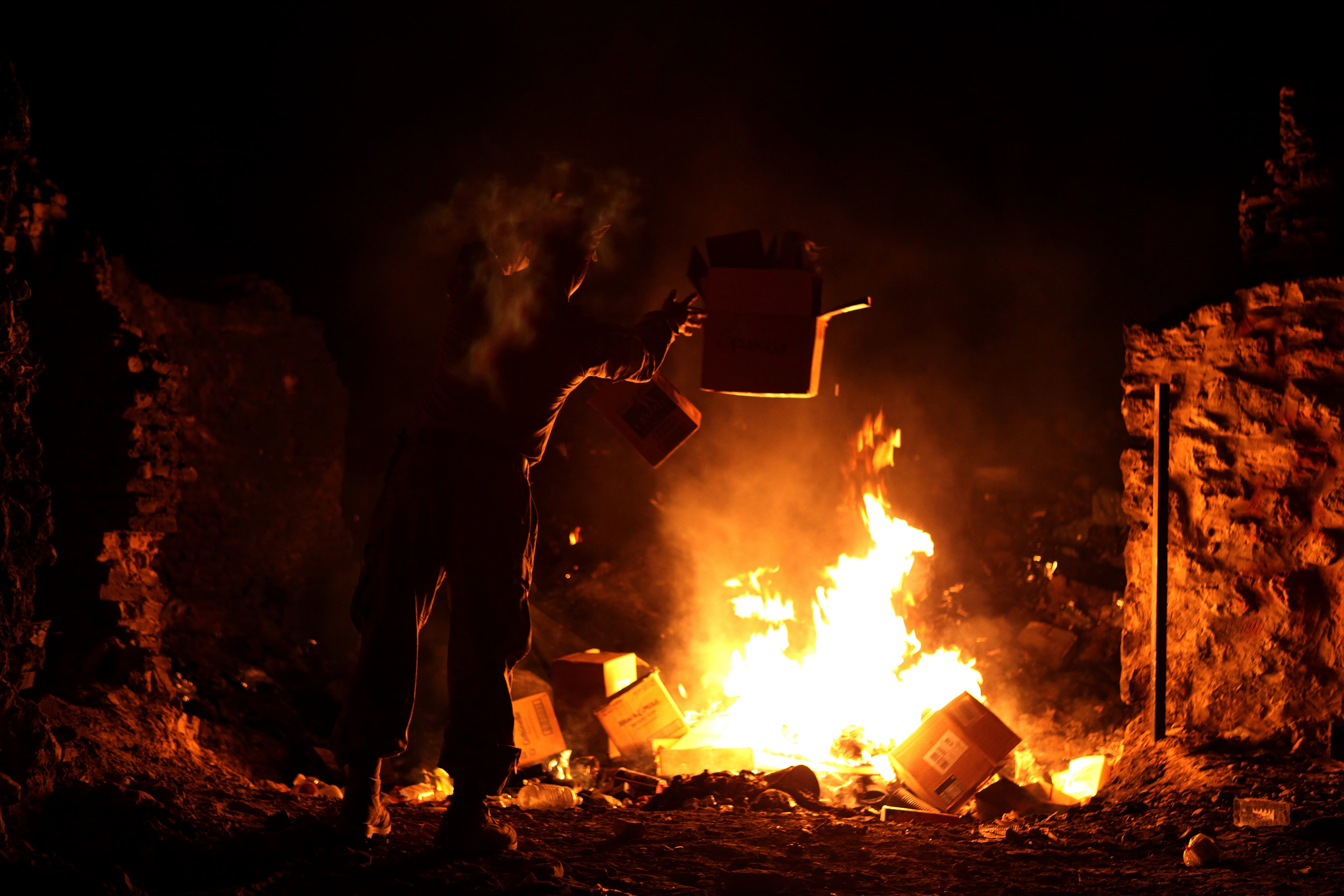The U.S. defense policy bill contains several provisions aimed at addressing the Pentagon’s ongoing use of open-air burn pits for waste disposal in combat zones and documenting locations where they operated.
The National Defense Authorization Act, which passed the House Wednesday and is now under consideration in the Senate, will require the Pentagon to draft a plan to close any remaining burn pits still in use and provide a historic, comprehensive list of burn pit-use sites to the Department of Veterans Affairs.
The legislation does not include a timeline for closing active burn pits, and it is unclear how many remain operational. According to a report furnished by the Defense Department to Congress in March, eight were in use earlier this year – one in Afghanistan, one in Egypt and seven in Syria.
But since the U.S. has scaled back operations in Syria, decreasing the number of troops from 1,000 to roughly 500, the number of burn pits currently active has likely declined.
Rep. Raul Ruiz, D-Calif., spearheaded the effort to get the burn pit language into the bill.
“The first step to take is to stop using the harmful burn pits that emit smoke with carcinogens and other toxins that are running the veterans’ health,” Ruiz, an emergency medicine physician, told Military Times.
Burn pits have been used by U.S. troops for decades to destroy human waste and garbage generated in deployed locations where proper disposal was difficult or impossible.
But following the invasions of Afghanistan and Iraq, the Pentagon also elected to use them at locations where large amounts of troops were stationed, resulting in disposal sites that were acres wide and blazed 24 hours a day.
According to personal reports and Defense Department documents, all types of rubbish went into the pits – household trash, hospital waste, animal carcasses, plastics, batteries, tires, computers and other office equipment.
More than 250 burn pits were used at U.S. military bases in Iraq, Afghanistan and Djibouti and elsewhere, and some service members who lived and worked near the sites report having respiratory diseases, autoimmune disorders and cancer as a result.
Ruiz said having a list of locations would help post 9/11 troops who develop a potentially related disease.
“This could facilitate helping the veterans get the health care to be better to take care of their illnesses as well as get them the benefits that they earned and they need,” Ruiz said.
Earlier this month, the Center for a New American Security and the Wounded Warrior Project released a report containing maps of Iraq and Afghanistan that document the location of pits broken down by location, time period and types of particulate matter.
The data used by the researchers to create the interactive graphics is based on DoD Periodic Operational and Environmental Monitoring reports and, while useful for the majority of service members who deployed to the region, does not show every location, since the Pentagon’s pollution monitoring effort in the combat zones was not comprehensive.
A number of burn-pit related bills have been introduced in Congress this year, including companion legislation by Rep. Tulsi Gabbard, D-Hawaii, and Sen. Amy Klobuchar, D-Minn., that would require the Pentagon to ensure that troops enroll in a VA register designed to document exposure to airborne pollutants.
Rep. Joaquin Castro, D-Texas, has sponsored the Family Member Access to Burn Pit Registry Act and other bills that would allow family members of veterans who are deceased or incapacitated to add their loved ones’ names to the registry, or update the registry when the veteran dies.
Ruiz also has several other initiatives, including a bill that would designate nine illnesses as presumed to be related to burn pit exposure — a move that would expedite the disability claims and health benefits filing process for veterans with the named diseases if VA decides the conditions are linked.
Dubbed the “Veterans Right to Breathe Act,” the bill seeks to add asthma, chronic bronchitis, chronic obstructive pulmonary disease, constrictive bronchiolitis, emphysema, granulomatous disease, interstitial lung disease, lung cancer and pneumonia to the presumptives list.
“We did an very thorough, in-depth medical and scientific literature review, and these were the ones that had an association with exposure, so we picked these,” Ruiz said. “However, we must recognize that there are an array of cancers in veterans exposed to burn puts and some veterans have autoimmune diseases."
The advocacy group Burn Pits 360 maintains a list of members who have died from diseases that physicians have said are related to environmental exposures. They include brain cancer, lymphoma, skin cancer, pancreatic cancer, testicular cancer and others.
VA has contracted with the National Academies of Sciences, Engineering and Medicine to conduct a systemic review of available scientific literature on burn pits and related environmental pollution. The report is expected to be released in 2020.
Patricia Kime is a senior writer covering military and veterans health care, medicine and personnel issues.





